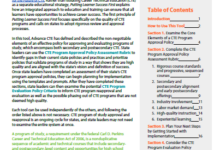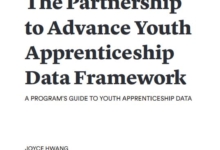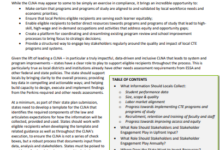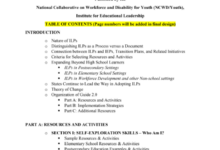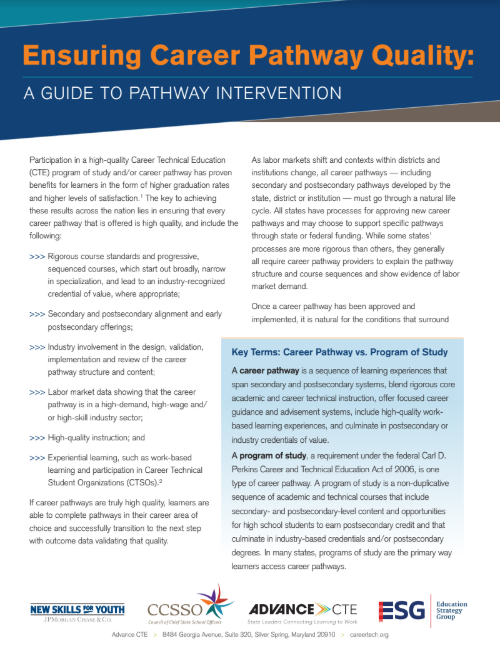As labor markets shift and contexts within districts and institutions change, all career pathways — including secondary and postsecondary pathways developed by the state, district or institution — must go through a natural life cycle. Once a career pathway has been approved and implemented, it is natural for the conditions that surround and support the pathway to change over time. This guide from Advance CTE, as part of the New Skills for Youth initiative, outlines the different types of intervention needed for pathways, and explores the steps leaders should take when making decisions to transform or phase out pathways that do not have labor market relevance.
Program Quality
This tool from Advance CTE lays out the non-negotiable elements of an effective policy for approving and evaluating CTE…

